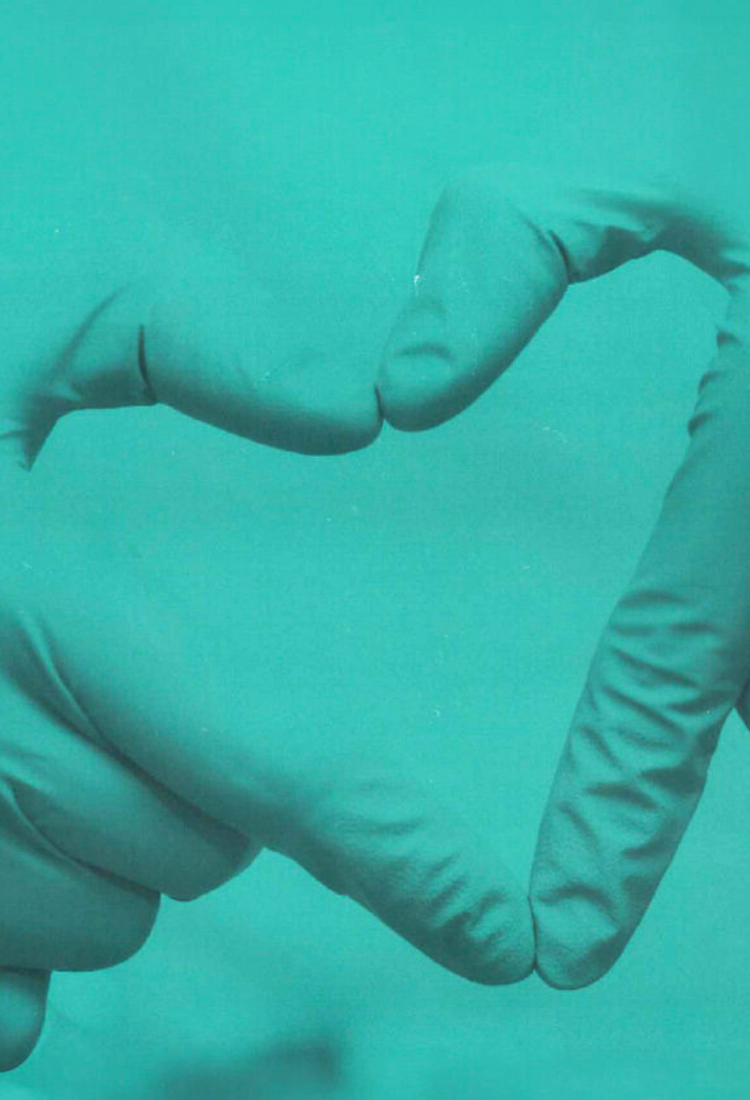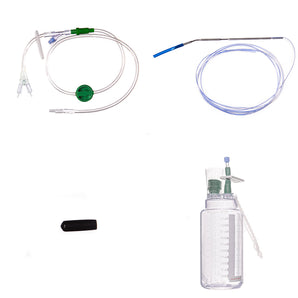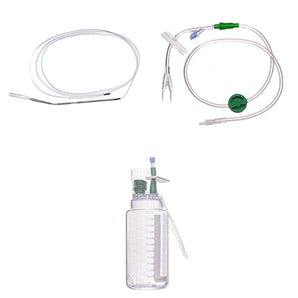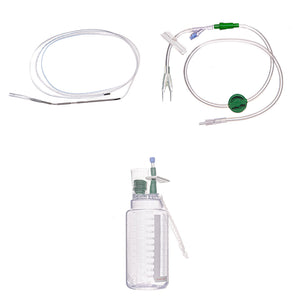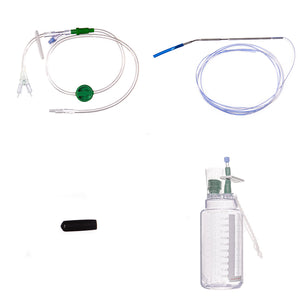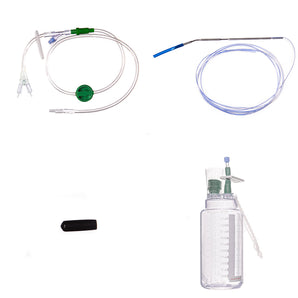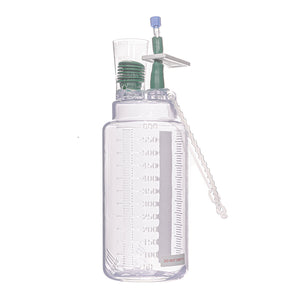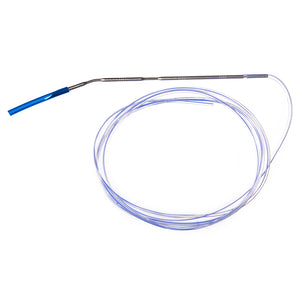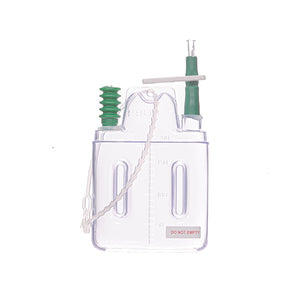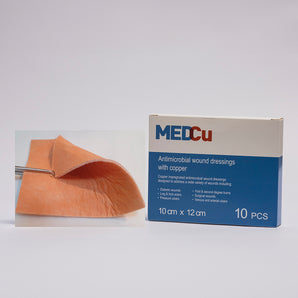
Quality Components
The PALIN® system combines several high quality components to ensure optimum results

Double Bendable Single Cut Trocar

Flush Port

One Way Valve

Y-Connector for Synthetic Middle Perforated Drains

Y-Connector for Sillicon & PVC Drains

Black cap

Vacuum Indicator

Luer Lock

Scientifically Proven Low Vacuum Regulator

10ml Interval Volume Markers
How to use the Palin Bottle
Components
PALIN provides health professionals with a variety of choice allowing for any combination of bottle size and drain size and type
Drain Sizes
- 3.2mm (1/8") - Silicone and Synthetic Only
- 4.8mm (3/16")
- 6.3mm (1/4") - Silicone Only
- 8.0mm (1/3") - Silicone Loose Drain only
Drains
- Synthetic Middle Perforated
- PVC Centre Fluted
- Silicone Centre Fluted
Bottles
200ml, 400ml, 600ml


Closed Wound Drainage for Faster Wound Healing
The PALIN Wound Drainage System has been designed in order to remove wound exudate removal by means of closed constant low vacuum suction in the SAFEST and and most effective way possible.
FAQs
Is wound drainage necessary?
Yes, Eliminates the rate of haematoma, decreases the wound infection rate, promotes faster wound healing and reduces scar tissue formation.
What is the advantage of constant suction?
It promotes faster wound healing by continuously pulling the wound flaps together.
What is the problem of intermittent suction?
It causes a disturbance in the wound healing process, which in turn could delay healing.
Does constant suction drain more than intermittent suction?
Initially yes. With constant suction the tissue layers will be pulled together and remain closed. This way a lot of fluid is drained initially. However, this will decrease enormously during the remainder of the drainage period. This promotes faster wound healing. With intermittent suction, the wound flaps are not continuously being pulled together with results in ‘breathing’ of the wound. Hence wound healing will take longer, and therefore the total amount of drained fluid will be more.
Why do we recommend a closed wound drainage system?
For the Patient: To decrease the possibility of infection.
For the Nursing Staff: To reduce the possibility of cross-contamination.
Why can we use small drains with our wound drainage systems?
The constant suction at a level of -115mmHg, will prevent the small wound drains from becoming clogged.
What are the advantages of small drains?
- Less dead space in the wound area after removing drains.
- Easier to remove the drain from a patient.
- Less painful for a patient when removing the drains.
What is the purpose of having black markers on the wound drains?
To ensure that the holes of the wound tube are situated far enough into the wound area, to prevent leakage. It is recommended that the wound drain should not be pulled out of the wound further than the black marker.
Is it possible to bend the needle?
Yes, it is possible to bend the needle up to 90°.
What is the function of the one-way valve?
Prevents back-flow of exudates from the connecting tube into the wound and prevents cross contamination for nursing staff.


